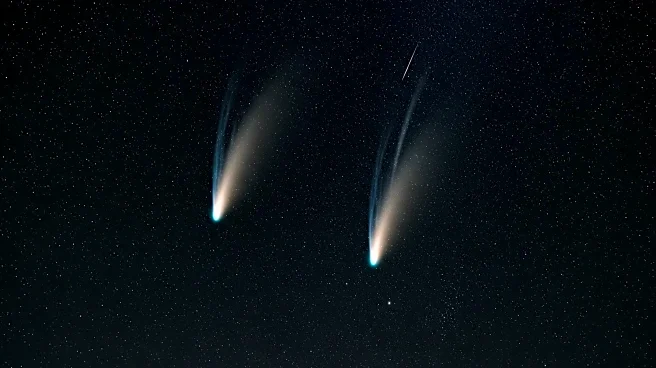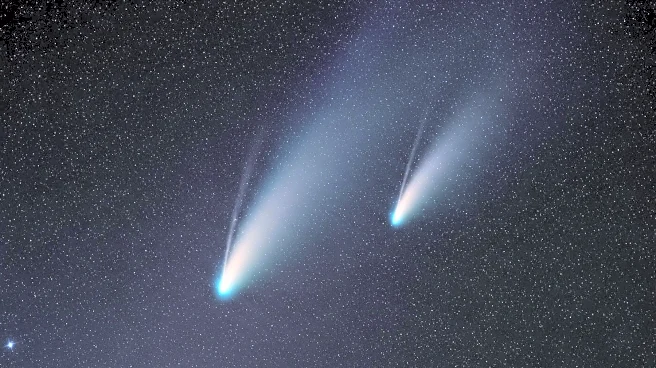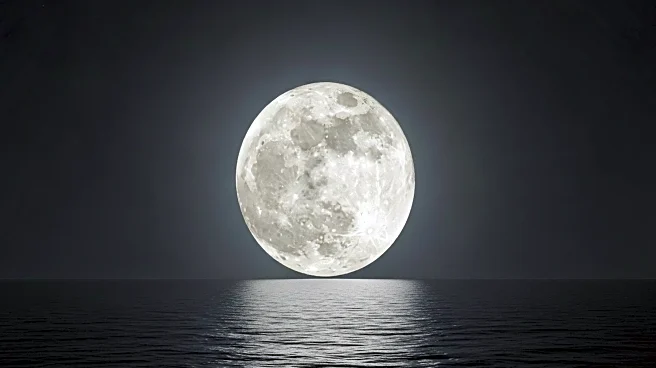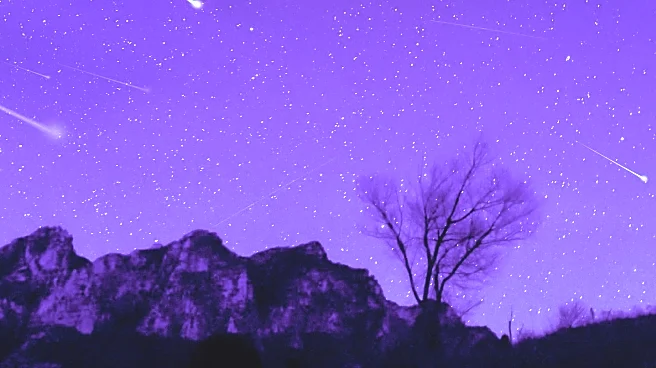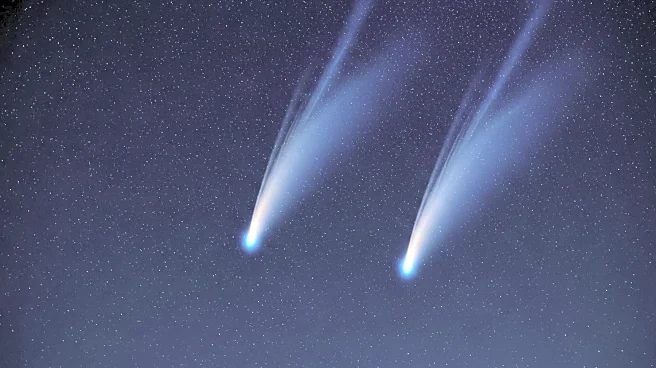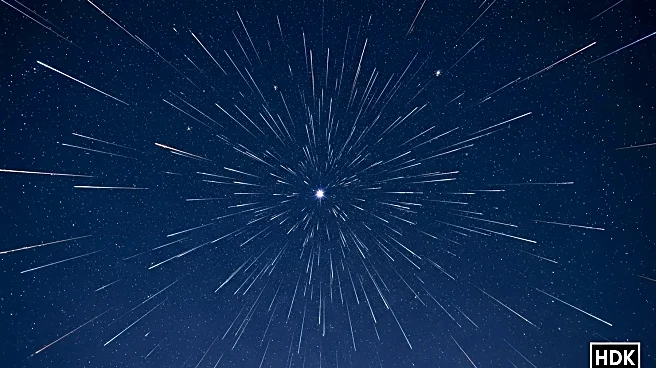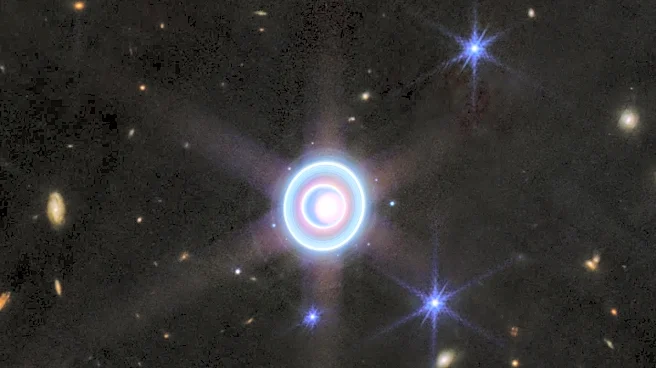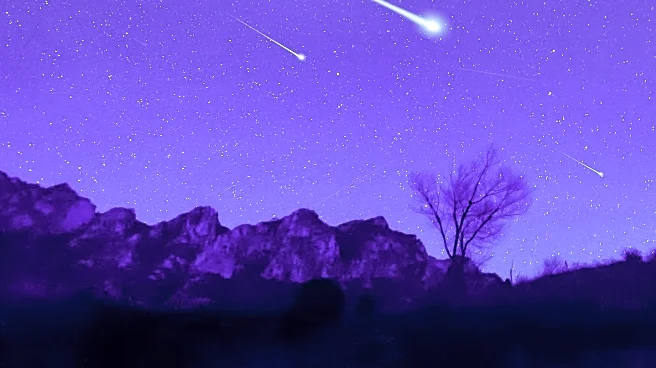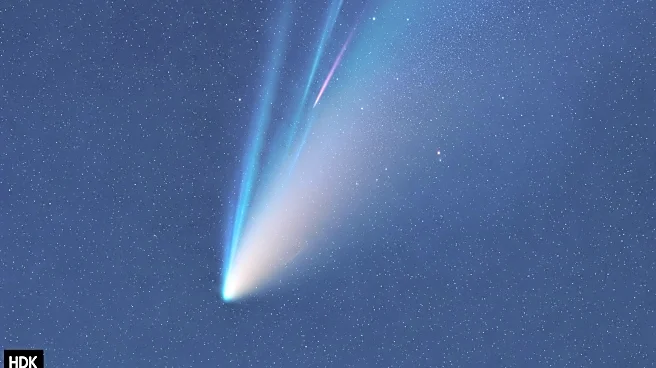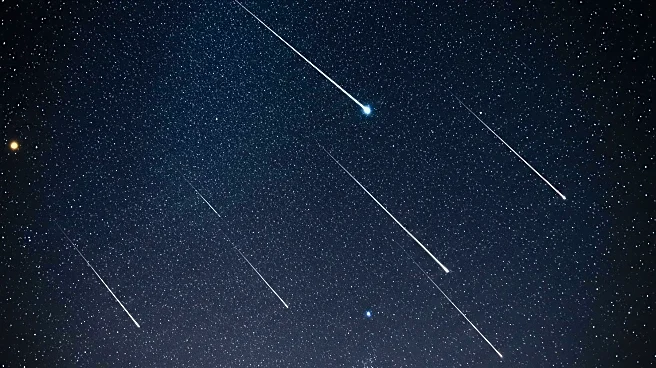What's Happening?
The Orionid meteor shower, an annual celestial event, is currently visible across the United States. This meteor shower occurs when Earth passes through debris left by Halley’s Comet, which last appeared in 1986. According to NASA, the Orionid meteors are known for their brightness and speed, with trails that can last from seconds to minutes. The peak of this year's shower is expected to be particularly luminous due to the moon's phase, which will darken the sky on October 21, enhancing visibility. The meteors appear to originate from the constellation Orion, and the best viewing conditions are expected in the Northern Hemisphere, where the crisp fall air provides clearer skies. The shower is active from October 2 to November 12, with the peak occurring between October 20 and 21, when up to 20 to 30 meteors per hour may be visible under ideal conditions.
Why It's Important?
The Orionid meteor shower offers a unique opportunity for stargazers and astronomy enthusiasts to witness a natural spectacle. This event is significant as it provides a chance to observe remnants of Halley’s Comet, a celestial body that will not return to the inner solar system until 2061. The meteor shower's visibility across the U.S. can boost interest in astronomy and science education, encouraging public engagement with space-related topics. Additionally, the event can attract visitors to national parks and designated dark sky areas, potentially benefiting local tourism and economies. The presence of Comet Lemmon, which will be visible alongside the meteor shower, adds to the event's appeal, offering a rare double feature for observers.
What's Next?
As the Orionid meteor shower continues, viewers are encouraged to find locations with minimal light pollution for optimal viewing. National parks and dark sky areas in the U.S., such as Joshua Tree and Acadia National Park, are recommended for the best experience. The peak viewing period is from midnight to dawn, and observers should allow their eyes to adjust to the darkness for about 30 minutes. The appearance of Comet Lemmon, which will not be visible again until 3421, provides an additional incentive for skywatchers to take advantage of this rare opportunity. The event may also inspire future interest in upcoming astronomical phenomena and contribute to ongoing discussions about space exploration and observation.

